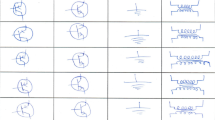Abstract
Manufacturers of printed circuit boards (PCBs) typically use automated optical inspection (AOI) machines to test their PCBs. However, AOI machines employ conventional image-processing methods. If the integrated circuit (IC) components are not identical to the golden samples, then the AOI machine registers those IC components as flaws. Conventional image-processing methods cause misjudgments and increase the cost of manual reviews. Character-verification and image-classification systems are proposed in this paper for detecting misplaced, missing, and reversed-polarity parts. The regions of IC components can be identified on PCBs by using the contour border-detection method. Through the proposed convolutional neural network (CNN) structure and refinement mechanism, the characters can be successfully recognized. The image-classification system was applied only to images with blurry characters. Different CNN learning structures were used in both systems, and the refinement mechanism was used in both systems to improve the results. The proposed character-verification and image-classification methods achieved 98.84% and 99.48% passing rates, and the amount of required training time was less than that of other methods, demonstrating the proposed methods’ greater effectiveness.















Similar content being viewed by others
References
Cho HJ, Park TH (2008) Template matching method for SMD inspection using discrete wavelet transform. Proc SICE Annual Conference: 3198–3201
Crispin AJ, Rankov V (2007) Automated inspection of PCB components using a genetic algorithm template-matching approach. Int J Adv Manuf Technol 35(3–4):293–300
Lee JJ, Lee PH, Lee SW, Yuille A, Koch C (2011) AdaBoost for text detection in natural scene. International Conference on Document Analysis and Recognition: 429–434
Epshtein B, Ofek E, Wexler Y (2010) Detecting text in natural scenes with stroke width transform. IEEE Computer Society Conference on Computer Vision and Pattern Recognition: 2963–2970
Nava CF, Gonzalez FF (2015) OCR for unreadable damaged characters on PCBs using principal component analysis and bayesian discriminant functions. Proceedings international conference on computational science and computational intelligence (CSCI 2015): 535–538
Li W, Neullens S, Breier M, Bosling M, Pretz T, Merhof D (2014) Text recognition for information retrieval in images of printed circuit boards. Annual conference of the IEEE industrial electronics society (IECON 2014): 3487–3493
Zhang S, Liu Y, Jin L, Luo C (2017) Feature enhancement network: a refined scene text detector. Association for the Advancement of artificial intelligence (AAAI 2018): 2612–2619
Shi B, Bai X, Yao C (2017) An end-to-end trainable neural network for image-based sequence recognition and its application to scene text recognition. IEEE Trans Pattern Anal Mach Intell 39(11):2298–2304
Liu W, Anguelov D, Erhan D, Szegedy C, Reed S, Fu CY, Berg AC (2016) SSD: single shot multibox detector. European conference on computer vision (ECCV2016): 21–37
Liao M, Shi B, Bai X, Wang X, Liu W (2017) Textboxes: a fast text detector with a single deep neural network. Association for the Advancement of artificial intelligence (AAAI 2017): 4161–4167
Otsu N (1979) A threshold selection method from gray-level histograms. IEEE Trans Syst Man Cybern 9(1):62–66
Suzuki S, Be K (1985) Topological structural analysis of digitized binary images by border following. Comput Vision, Graph Image Process 30(1):32–46
Kingma DP, Ba J (2014) Adam:a method for stochastic optimization. arXiv preprint arXiv:1412.6980
Redmon J, Divvala S, Girshick R, Farhadi A (2016) You only look once: unified, real-time object detection. Proc IEEE Conf Comput Vision and Pattern Recogn, Las Vegas, Nevada, USA: 779–788
Simonyan K, Zisserman A (2014) Very deep convolutional networks for large-scale image recognition. arXiv preprint arXiv:1409.1556
Szegedy C, Liu W, Jia Y, Sermanet P, Reed S, Anguelov D, Erhan D, Vanhoucke V, Rabinovich A (2015) Going deeper with convolutions. Proceedings of the IEEE Computer Society Conference on Computer Vision and Pattern Recognition: 7–12
Krizhevsky A, Sutskever I, Hinton GE (2012) Imagenet classification with deep convolutional neural networks. Proc 25th Int Conf Neural Inform Process Syst 1:1097–1105
He K, Zhang X, Ren S, Sun J (2016) Deep residual learning for image recognition. Proceedings of the IEEE conference on computer vision and pattern recognition, Las Vegas, Nevada, USA: 770–778
Liu L, Shen C, Hengel AVD (2017) Cross-convolutional-layer pooling for image recognition. IEEE Trans Pattern Anal Mach Intell 39(11):2305–2313
Zhang J, Shao K, Luo X (2018) Small sample image recognition using improved convolutional neural network. J Vis Commun Image Represent 55:640–647
Chen B, Li J, Wei G, Ma B (2018) A novel localized and second order feature coding network for image recognition. Pattern Recogn 76:339–348
Chen PH, Si S, Kumar S, Li Y, Hsieh C (2018) Learning to screen for fast Softmax inference on large vocabulary neural networks. arXiv preprint arXiv: 1810.12406
Author information
Authors and Affiliations
Corresponding author
Additional information
Publisher’s note
Springer Nature remains neutral with regard to jurisdictional claims in published maps and institutional affiliations.
Rights and permissions
About this article
Cite this article
Lin, CH., Wang, SH. & Lin, CJ. Using convolutional neural networks for character verification on integrated circuit components of printed circuit boards. Appl Intell 49, 4022–4032 (2019). https://doi.org/10.1007/s10489-019-01486-5
Published:
Issue Date:
DOI: https://doi.org/10.1007/s10489-019-01486-5




